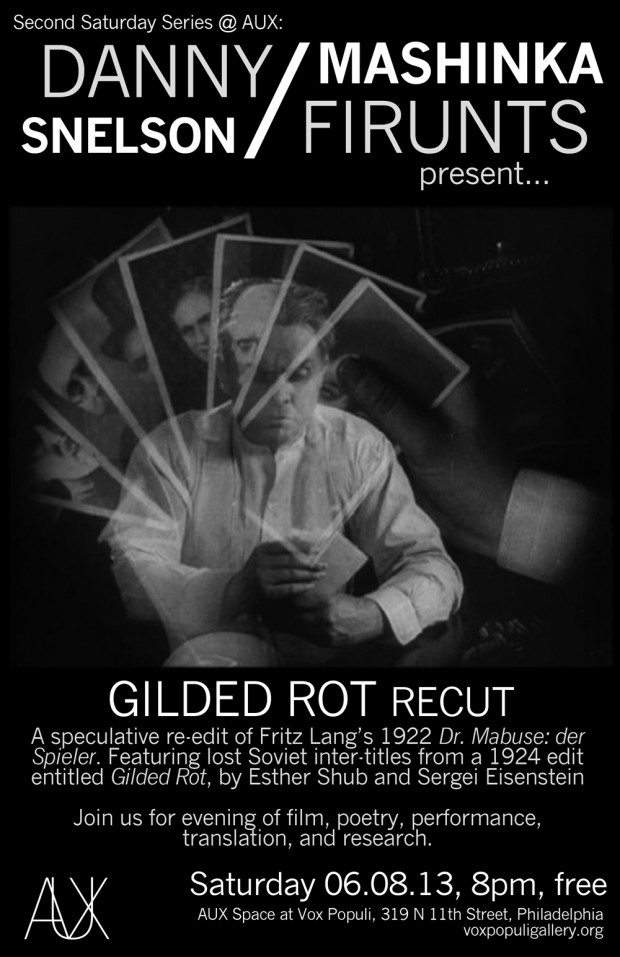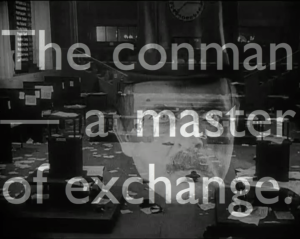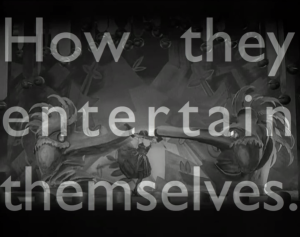“Gilded Rot” was re-edited over the course of five days from March 9 to 13, 1924 by Esfir Shub with the assistance of her young apprentice, Sergei Eisenstein. The project was completed at the Goskino Montage Bureau, where Shub would re-edit over 200 foreign films during her tenure. Shub was among the foremost practitioners of the genre known as “peremontazh” or re-montaging. This entailed recutting imported films, sanitizing their narratives, and rewriting their intertitles to make them ideologically suitable for Soviet redistribution. One of the trademarks of the genre was the systematic insertion of tragic conclusions into all foreign narratives, so as to avoid suggesting that a capitalist system is capable of producing happy endings. After landing on Shub and Eisenstein’s editing table, Dr. Mabuse was summarily transformed into an allegory of Western bourgeois depravity — a tale of the terrors that befall those who prefer idling to labor. The intertitles reveal Shub and Eisenstein’s imagination of the West (and perhaps of the Soviet itself under the New Economic Policy) to have been populated by cocaine addicts, seekers of vulgar amusements, speculators, coquettes, and connoisseurs of decadent art. By all accounts, neither a full nor partial print of the Shub/Eisenstein recut survives. However, the RGALI archive has preserved their rewritten intertitles. Remarkably, the archive’s records indicate that the documents remained unread by researchers until the early 1990s. From these textual fragments, we are able to piece together a faint notion of the film’s narrative. In 2002, Aleksandr Deryabin compiled and abridged these intertitles for publication in the journal «Киноведческие Записки.» We’ve translated the intertitles into colloquial English, and used them as a departure point for generating a speculative reimagining of the film. Following Shub and Eisenstein’s own logic of destabilized authorship, this Gilded Rot re-edit is less interested in fidelity to a lost original than it is in extending Shub and Eisenstein’s investigation into how units of cinematic meaning might be endlessly reshuffled to generate new semantic readings. In this new re-edit, you’ll see all 141 recovered intertitles, transposed onto footage from Fritz Lang’s original Dr. Mabuse films. As the narrative skips and jumps around the dark corridors of Weimar Berlin, try also to bear in mind a musty room at GOSKINO in Moscow, with Shub and Eisenstein hunched over an editing table, cutting together a new vision of Weimar with the Soviet spectator in mind. — Mashinka Firunts | Sample Video forthcoming |



